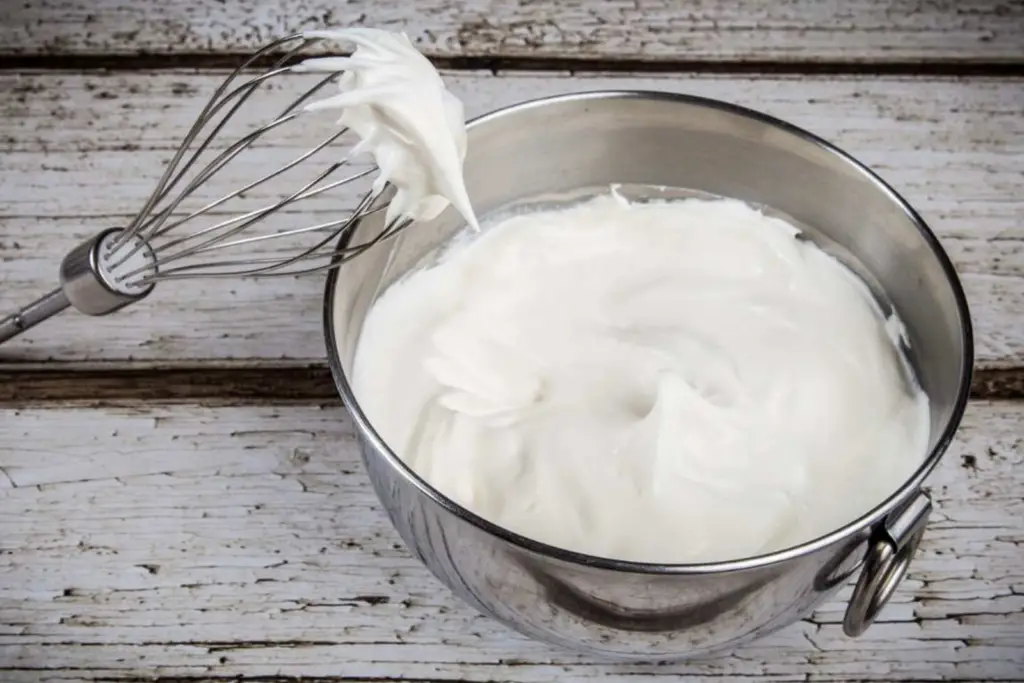
Yogurt, a creamy and tangy dairy delight, has been enjoyed by cultures worldwide for centuries. This fermented dairy product is made by adding beneficial bacteria to milk, transforming it into a smooth and nutritious treat. With its probiotic properties and rich source of calcium and protein, yogurt is not only delicious but also offers potential health benefits. Whether enjoyed on its own, mixed with fruits and granola for a refreshing breakfast, or used as a versatile ingredient in smoothies, dressings, and sauces, yogurt’s culinary versatility has made it a beloved choice among food enthusiasts. However, when purchasing yogurt in bulk or when making homemade batches, it may be challenging to consume it all before it reaches its expiration date. Freezing yogurt becomes a practical and effective method to preserve its creamy texture and tangy flavor, ensuring that each spoonful retains its delightful taste and nutritional value, ready to enrich your meals and snacks with the goodness of yogurt, even when fresh yogurt is not readily available or when you wish to extend its shelf life for future use. In this guide, we will explore the best practices for freezing yogurt, allowing you to savor its delightful taste and enjoy its potential health benefits, whenever you desire, without the need to worry about yogurt going to waste or missing out on the pleasure of this beloved dairy treat.
Here are the simple steps to freeze frozen yogurt:
Step 1: Choose the Right Frozen Yogurt
Selecting the right frozen yogurt is a crucial first step when preparing to freeze this delightful treat. Here’s why it’s important to be mindful of the type of frozen yogurt you choose:
- Quality Matters: High-quality frozen yogurt is essential for a better freezing experience. Look for reputable brands or consider using a homemade batch that you know and love. The taste and texture of the frozen yogurt before freezing will largely determine how well it holds up after being frozen and thawed.
- Flavors and Preferences: Different brands offer a wide variety of flavors, and homemade frozen yogurt can be customized to your liking. Choose flavors that you enjoy and that will bring you delight when you consume them later. This way, you’ll be looking forward to savoring your frozen treat even after it’s been frozen.
- Smooth and Creamy Texture: The texture of the frozen yogurt plays a significant role in the overall enjoyment. A smooth and creamy texture is generally preferred, as it ensures a pleasurable mouthfeel. When selecting frozen yogurt, go for one that promises this appealing consistency.
- Freshness Matters: To maintain the best possible quality after freezing, ensure that the frozen yogurt you choose is fresh. Avoid selecting frozen yogurt that has been sitting out at room temperature for an extended period, as it may have already begun to deteriorate in quality. Freshly bought or recently made frozen yogurt is ideal for freezing.
By paying attention to the quality, flavors, texture, and freshness of the frozen yogurt, you set the foundation for a successful freezing process. Starting with the right frozen yogurt will enhance the taste and overall experience when you decide to enjoy your frozen treat at a later time. So, take your time to make the best choice and look forward to savoring a delightful frozen yogurt whenever the craving strikes.
Step 2: Prepare the Storage Containers
Properly preparing the storage containers is a critical step in the process of freezing frozen yogurt. Here’s why it’s important and what you need to do:
- Suitable Containers: Selecting the right containers for freezing frozen yogurt is essential to maintain its quality and prevent freezer burn. Airtight plastic containers or freezer-safe resealable bags are ideal choices. These containers help to seal out air and moisture, which can degrade the texture and taste of the frozen yogurt over time.
- Prevent Contamination: Before using the containers, it’s crucial to ensure they are clean and dry. Any lingering residue or moisture can lead to unwanted contamination of the frozen yogurt. Contaminants can affect the flavor and potentially cause spoilage. Thoroughly wash the containers with hot, soapy water and rinse them well before filling them with the frozen yogurt.
- Portion Control: Consider portioning the frozen yogurt into individual servings or smaller batches based on your needs. This way, you won’t have to thaw the entire container each time you want a serving. Portioning also helps with even freezing and reduces the chances of waste.
- Leave Room for Expansion: If using plastic containers, leave some space at the top to accommodate expansion during freezing. When liquids freeze, they can expand, and not leaving enough room may cause the container to crack or leak.
By using suitable containers and ensuring they are clean and dry, you create a hygienic environment for the frozen yogurt to freeze safely. Portioning and leaving room for expansion prevent potential issues, while labeling helps you manage the frozen yogurt’s shelf life. With these steps, you can confidently proceed to freeze your frozen yogurt and enjoy its delectable taste and texture whenever you’re ready for a frozen treat.
Step 3: Portion the Frozen Yogurt
Portioning the frozen yogurt before freezing is a crucial step that offers several benefits. Here’s why it’s important and what you need to consider:
- Thawing Convenience: By deciding on the portion sizes you want to freeze, you make the thawing process much more convenient. Freezing frozen yogurt in individual servings means you can easily take out just the amount you want to consume, rather than thawing the entire batch. This is particularly useful when you have different family members with varying preferences or when you want to enjoy a quick, single serving.
- Reducing Waste: Portioning the frozen yogurt also helps to minimize unnecessary waste. When you freeze the entire batch in one container, you might end up thawing more than you intend to eat, and any leftover thawed [frozen yogurt] might not refreeze as well. Portioning allows you to defrost only what you need, reducing the likelihood of throwing away any unused portions.
- Even Freezing: Smaller portions freeze more quickly and evenly than larger quantities. This is especially important for maintaining the overall texture and consistency of the frozen yogurt. Uneven freezing could result in icy or grainy spots, which can affect the overall enjoyment of the treat.
- Leave Room for Expansion: If you’re using plastic containers for portioning, it’s crucial to leave some room at the top of each container to allow for expansion during freezing. As frozen yogurt freezes, it may expand, and without enough space, the container could crack or leak.
By thoughtfully portioning the frozen yogurt, you ensure that it remains easy to handle, minimizes waste, and retains its quality after thawing. Whether you’re freezing individual servings or dividing the batch into smaller portions, this step contributes to a smoother and more enjoyable frozen yogurt experience. Remember to leave enough room for expansion if using plastic containers, and you’ll be all set for a satisfying frozen treat whenever you desire.
Step 4: Seal and Label the Containers
Sealing and labeling the containers that hold the portioned frozen yogurt is a crucial step to maintain its quality and track its storage time. Here’s why this step is essential and how to do it effectively:
- Preventing Freezer Burn: Properly sealing the containers is vital to prevent air from entering and coming into contact with the frozen yogurt. Exposure to air can lead to freezer burn, which causes the frozen yogurt to become dehydrated and develop unpleasant off-flavors. Freezer burn can also negatively impact the texture, making the frozen yogurt grainy and less enjoyable.
- Choosing Suitable Sealing Methods: Use airtight plastic containers or freezer-safe resealable bags to ensure a tight seal. If using plastic containers, ensure the lids are securely fastened. For resealable bags, remove any excess air before sealing them shut. By creating a tight seal, you protect the [frozen yogurt] from air exposure and potential freezer burn.
- Labeling for Organization: Labeling each container with the current date is essential for effective organization and keeping track of the frozen yogurt storage time. Frozen yogurt can typically maintain its quality for about 1 to 2 months in the freezer. By noting the freezing date, you can easily identify how long the frozen yogurt has been frozen and prioritize its consumption accordingly.
- First In, First Out (FIFO): Implementing a “first in, first out” system is helpful when you have multiple containers of frozen yogurt with different freezing dates. This means using the older batches before the newer ones. FIFO ensures that you consume the oldest frozen yogurt first, reducing the risk of any portion being forgotten and left to freezer burn over an extended period.
- Storage Location: After sealing and labeling the containers, place them in the coldest part of the freezer, usually the back or bottom shelves. This ensures a consistent freezing temperature and maintains the best quality of the frozen yogurt.
By sealing the containers tightly and labeling them with the freezing date, you take essential steps to preserve the taste, texture, and overall quality of the frozen yogurt. Additionally, following a FIFO system and storing the containers properly in the freezer ensures that you can enjoy your frozen yogurt to the fullest whenever you decide to indulge.
Step 5: Freeze the Frozen Yogurt
Freezing the frozen yogurt properly is essential to maintain its taste, texture, and overall quality. Here’s why it’s important to follow this step and how to do it effectively:
- Optimal Freezing Conditions: Placing the sealed containers in the coldest part of your freezer is crucial for creating optimal freezing conditions. The coldest areas of the freezer are typically the back or the bottom shelves. These locations ensure that the frozen yogurt is exposed to the most consistent and stable freezing temperature, which is essential for preserving its integrity.
- Avoiding Temperature Fluctuations: It’s important to avoid placing the frozen yogurt containers near the freezer door. The freezer door is the warmest area of the freezer and is susceptible to temperature fluctuations every time the door is opened. These fluctuations can lead to uneven freezing and affect the overall quality of the [frozen yogurt].
- Preventing Partial Thawing: Consistent freezing temperature is especially critical to prevent partial thawing of the frozen yogurt. When the temperature fluctuates, there is a risk that some portions of the frozen yogurt may start to thaw and refreeze, resulting in icy crystals or a loss of smooth texture.
- Minimizing Freezer Burn: Placing the containers in the coldest part of the freezer and away from the door also helps minimize the risk of freezer burn. Freezer burn occurs when the frozen yogurt is exposed to air and becomes dehydrated. Keeping the containers in a stable, cold environment reduces the chances of air exposure and freezer burn.
- Proper Freezing Time: Depending on the temperature of your freezer and the size of the frozen yogurt portions, it may take a few hours to freeze completely. Larger containers or thicker layers of [frozen yogurt] might require more time to freeze thoroughly. Patience during the freezing process will ensure the best results.
By placing the sealed frozen yogurt containers in the coldest part of the freezer and avoiding the freezer door, you create an ideal environment for freezing. This helps maintain the quality of the frozen yogurt and ensures that it will be just as delicious when you decide to enjoy it later. With proper freezing, you can confidently store your frozen yogurt for an extended period and relish its delightful taste and creamy texture whenever you crave a cool and sweet treat.
How long can frozen yogurt last in the freezer?
Frozen yogurt can last in the freezer for approximately 1 to 2 months without significant loss in quality. Properly stored in airtight containers and maintained at a consistent freezing temperature, it retains its taste and texture for an extended period. However, for the best flavor and texture, it’s recommended to consume frozen yogurt within the first two months of freezing.
Step 6: Avoid Frequent Thaw
Minimizing frequent thawing and refreezing of the frozen yogurt is crucial for preserving its optimal texture and taste. Here’s why it’s important and how to handle the frozen yogurt to maintain its quality:
- Texture Preservation: Frozen yogurt has a delicate texture that can be affected by the thawing and refreezing process. Each time the frozen yogurt is thawed, ice crystals can form and affect its smooth and creamy consistency. Repeated freezing and thawing can also lead to a loss of moisture, resulting in a grainy or icy texture that may not be as enjoyable.
- Taste Retention: Frequent thawing and refreezing can also impact the taste of the frozen yogurt. The process of ice crystal formation and moisture loss can lead to flavor changes and a loss of the original taste profile. By avoiding frequent thawing and refreezing, you can savor the frozen yogurt with its intended flavor intact.
- Food Safety: Additionally, repeatedly thawing and refreezing frozen yogurt can raise food safety concerns. Every time the frozen yogurt reaches a temperature above freezing, it enters the “danger zone” (40°F to 140°F or 4°C to 60°C), where bacteria can multiply rapidly. This can increase the risk of foodborne illnesses if the frozen yogurt is not handled properly.
- Portion Control: To minimize the need for frequent thawing and refreezing, it’s essential to practice portion control. Take out only the amount of frozen yogurt you intend to consume at a given time. This way, you won’t have leftovers that need to be refrozen, reducing the risk of texture and taste degradation.
- Prompt Freezing: After scooping out the desired portion, return the remaining frozen yogurt to the freezer promptly. Do not leave it out at room temperature for an extended period, as this can lead to the development of harmful bacteria. Seal the container securely to prevent air exposure and potential freezer burn.
By being mindful of how much frozen yogurt you take out at a time and promptly returning the rest to the freezer, you can enjoy the treat without compromising its quality. Practicing portion control and avoiding frequent thawing and refreezing will help you relish the delightful taste and creamy texture of your frozen yogurt whenever you desire a cool and refreshing treat.
Step 7: Thaw the Frozen Yogurt
Thawing the frozen yogurt properly is essential to retain its original taste, texture, and quality. Here’s why it’s important to follow this step and how to do it effectively:
- Slow and Controlled Thawing: Thawing the frozen yogurt slowly and under controlled conditions is crucial to maintain its creamy texture and prevent any potential texture changes. Gradual thawing allows the frozen yogurt to regain its original consistency without the formation of large ice crystals or ice chunks.
- Refrigerator Thawing: The best method for thawing frozen yogurt is to transfer the container from the freezer to the refrigerator. Placing it in the refrigerator allows the frozen yogurt to thaw at a consistent and safe temperature. The cool environment of the refrigerator ensures that the frozen yogurt remains out of the “danger zone,” preventing any rapid bacterial growth.
- Time Required: Thawing frozen yogurt in the refrigerator may take several hours or overnight, depending on the size of the container and the thickness of the frozen yogurt layer. Be patient and plan ahead, allowing enough time for the thawing process.
- Avoiding Microwave Thawing: It’s essential to avoid using a microwave to defrost frozen yogurt. Microwaving can lead to uneven thawing and may result in the development of hot spots that can affect the texture and taste of the frozen yogurt. Additionally, microwaving can partially melt the frozen yogurt, causing it to become soupy and lose its desirable consistency.
- Preventing Refreezing: Once the frozen yogurt has thawed in the refrigerator, it’s essential to avoid refreezing it. Repeated thawing and refreezing can lead to texture degradation and affect the overall quality of the frozen yogurt.
By opting for slow and controlled refrigerator thawing, you can enjoy your frozen yogurt as if it were freshly made. This gentle thawing method preserves the creamy texture and delicious taste, allowing you to savor the treat just as you would when it was first frozen. Avoiding microwave thawing and preventing refreezing are key practices to ensure that your frozen yogurt maintains its delightful qualities throughout the thawing process.
Other related questions
How do I know if the frozen yogurt has gone bad after being frozen?
To determine if frozen yogurt has gone bad after being frozen, look for signs of spoilage. These include an off smell, sour or rancid taste, or visible mold growth. Additionally, if the frozen yogurt appears to have developed ice crystals or a grainy texture, it may have degraded in quality. If any of these signs are present, it’s best to discard the frozen yogurt to avoid consuming spoiled or unsafe food.
Can you freeze frozen yogurt with fruit or candy toppings?
Yes, you can freeze frozen yogurt with fruit or candy toppings. However, consider that the texture and taste of the toppings may change slightly upon freezing and thawing. To freeze, transfer the frozen yogurt with toppings into airtight containers or freezer-safe bags, ensuring they are well sealed.
Can I freeze frozen yogurt with added sauces or syrups?
Yes, you can freeze frozen yogurt with added sauces or syrups. However, keep in mind that the texture and consistency of the sauces or syrups might be slightly altered upon freezing and thawing. Before freezing, transfer the frozen yogurt with sauces or syrups into airtight containers or freezer-safe bags, ensuring proper sealing.
Can I freeze frozen yogurt with nuts or cookie pieces?
Yes, you can freeze frozen yogurt with nuts or cookie pieces. However, be aware that the texture of the nuts or cookie pieces may change slightly upon freezing and thawing. To freeze, transfer the frozen yogurt with nuts or cookie pieces into airtight containers or freezer-safe bags, making sure they are well sealed.








